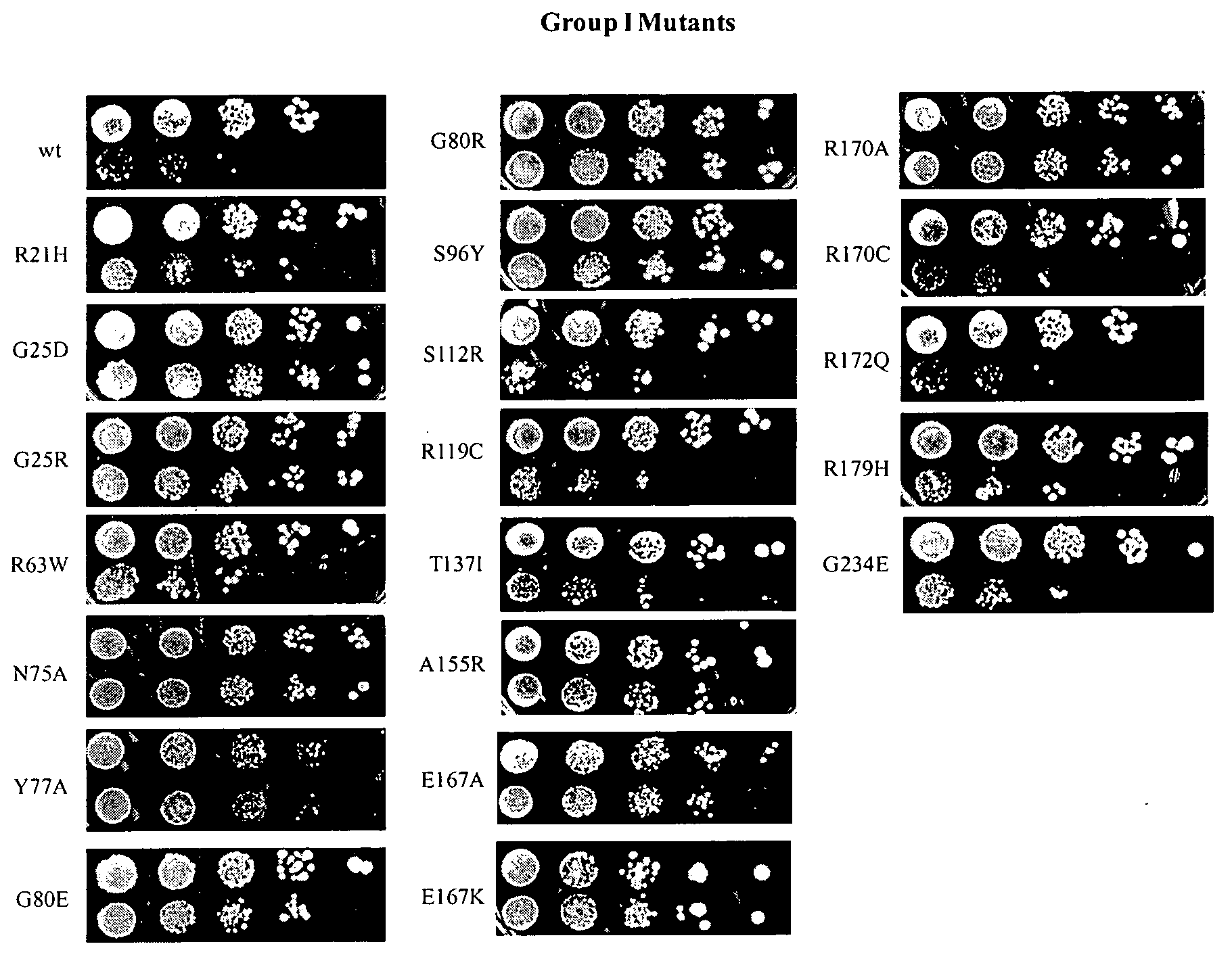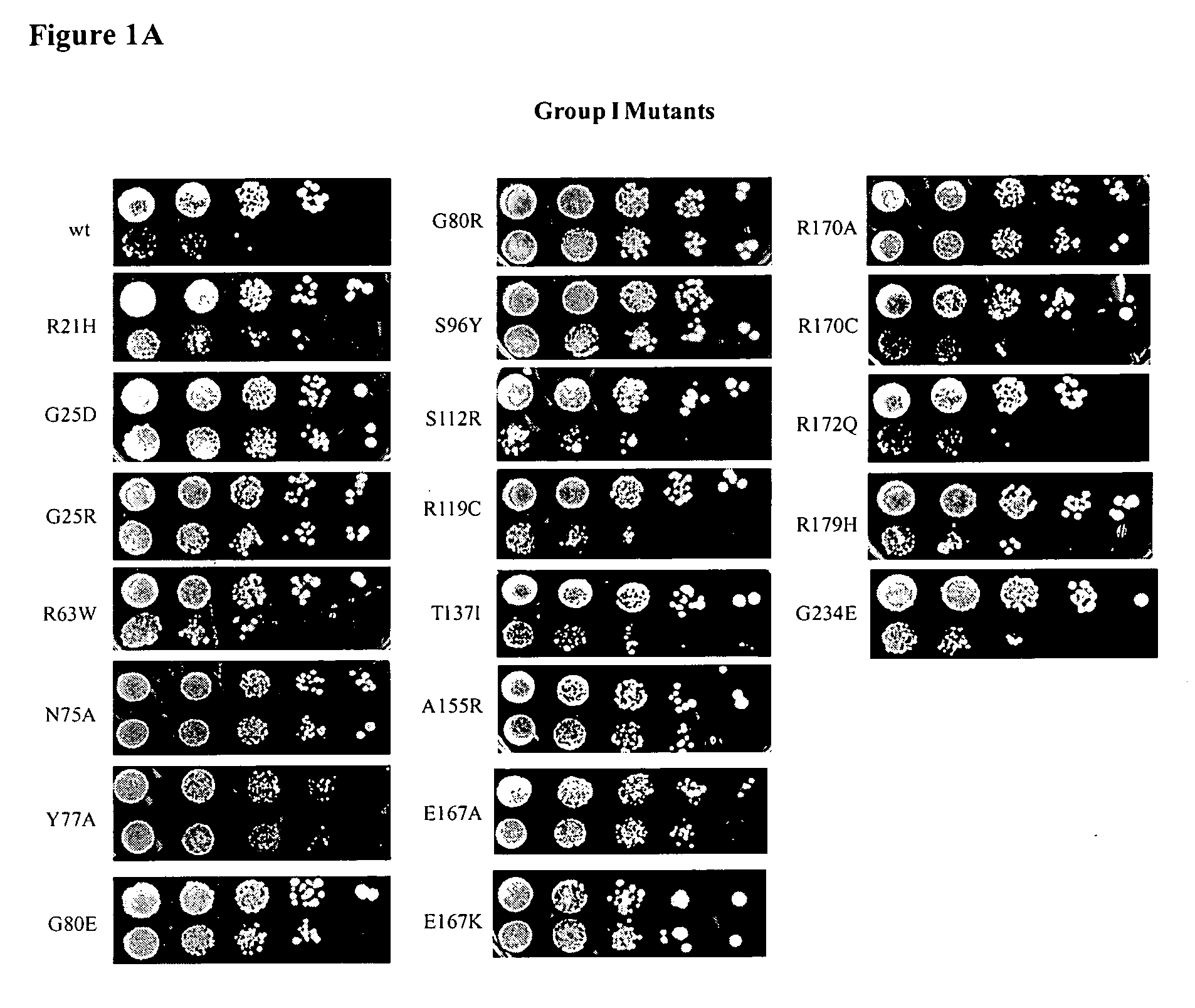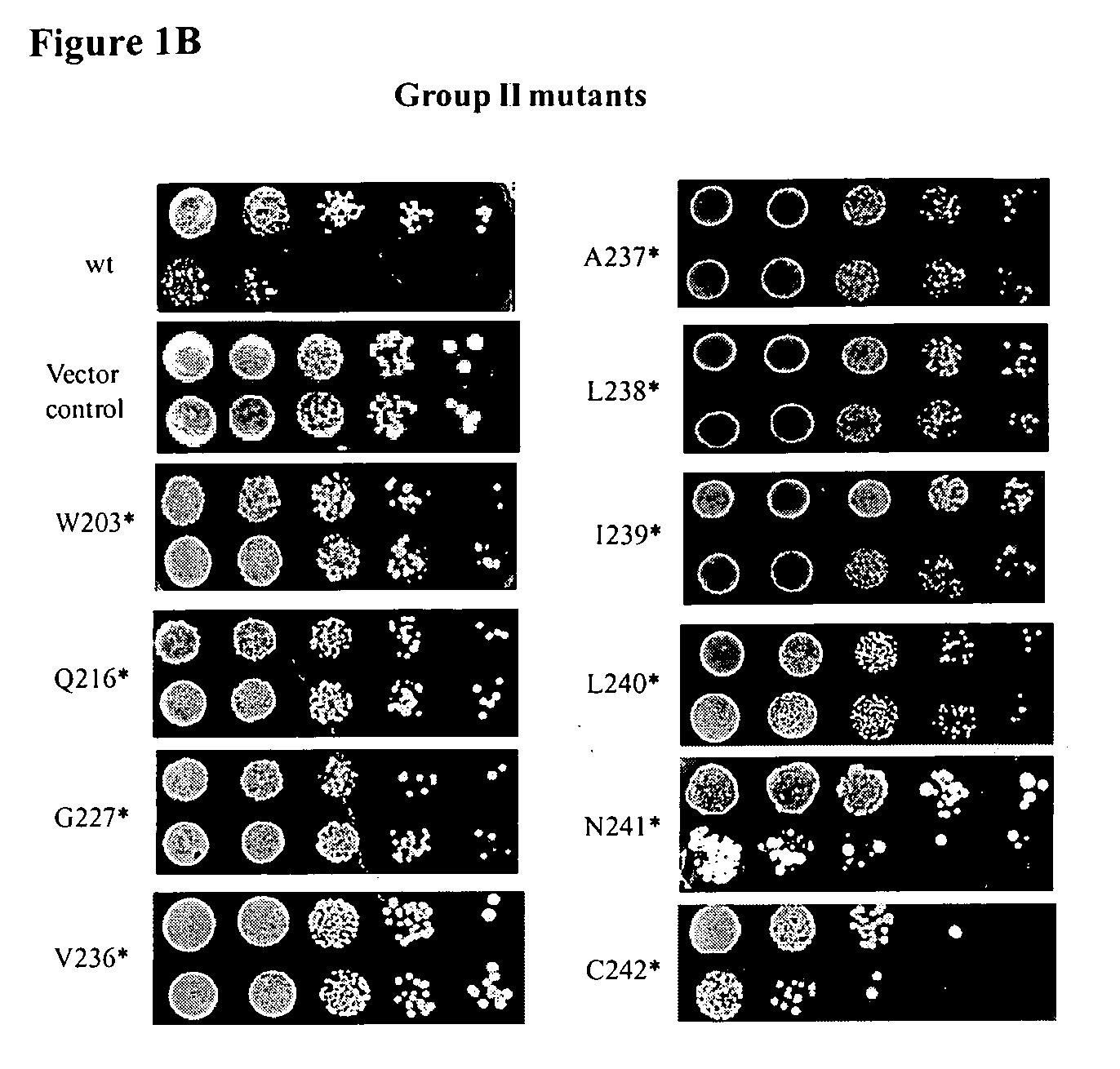Nontoxic shiga-like toxin mutant compositions and methods
a toxin mutant and composition technology, applied in the field of nontoxic shiga-like toxin mutant compositions and methods, can solve the problems of no effective treatment measures, no effective therapeutics against stx-mediated, and failure of renal failure in infants and young children
- Summary
- Abstract
- Description
- Claims
- Application Information
AI Technical Summary
Benefits of technology
Problems solved by technology
Method used
Image
Examples
example 1
Random Mutations of Stx1
[0085]The full-length cDNA corresponding to the A subunit of Stx1 (Stx1A) including the N-terminal 22-residue signal peptide and 293-residue mature Stx1 was cloned into pGEMT-easy (Promega) vector by PCR using total DNA isolated from E. coli O157:H7. The Stx1A cDNA was then subcloned into pYES2.1 / V5-His-Topo yeast expression vector (Invitrogen) downstream of the GAL1 promoter, resulting in NT890 with 3′ V5- and His-tags. NT890 plasmid was mutagenized by hydroxylamine and transformed into yeast. Yeast cells were grown on SD-Ura medium supplemented with glucose. A totally of 111 yeast colonies were singly picked and replica plated on SD-Ura plates containing galactose. The initial screening found 70 (63%) clones growing well on galactose-containing medium. Twenty-eight (28) clones (25%) could grow partially on galactose medium. Plasmids were isolated from some yeast clones and transformed into E. coli DH5α and their nucleotide sequences were determined. Out of...
example 2
Stx1 Mutants not Toxic to Yeast Cells
[0086]The growth inhibition of yeast cells by Stx1A point mutants was determined by the viability assay. Yeast cells expressing wt Stx1A or the mutants were plated on SD-Ura / glucose medium after induction in galactose for 0 and 10 hours. Upon induction, wt Stx1A reduced the viability of yeast cells by 3 logs at 10 h (FIG. 1). Viability assay showed that some non-stop codon point mutants, G25D, G25R, N75A, Y77A, G80E, G8OR, S96Y, A155R, E167A, E167K and R170A, lost their cytotoxicity significantly because the yeast cells harboring these mutants grew as well as those cells harboring the vector control at 10 h post-induction.
[0087]The stop codon mutants, from W203* to L240*, resulting in 3′-truncations have lost their cytotoxicity. The region comprising G227 to R251 is predicted to be the trans-membrane domain of Stx1A by LaPointe et al., A Role for Protease-sensitive Loop Region of Shiga-like Toxin 1 in the Retrotranslocation of Its Al Domain from ...
example 3
Wild-Type (wt) and Mutant Stx1 Expression and Accumulation in Yeast Membrane
[0089]Immunoblot analysis with anti-V5 monoclonal antibody (Invitrogen) was used to examine the protein expression of wt Stx1A and its mutants. Total membrane fractions were separated from the cytosolic fractions of yeast cells harboring wt Stx1A and mutants. Our results have shown that wt Stx1A and mutants are mainly associated with the membranes (FIG. 2). The expected molecular weight of mature Stx1A is approximately 30 kDa if the 22-residue signal peptide is processed. Most of the Stx1A mutants expressed a single or double proteins as the wt Stx1A which was often undetectable.
PUM
 Login to View More
Login to View More Abstract
Description
Claims
Application Information
 Login to View More
Login to View More - R&D
- Intellectual Property
- Life Sciences
- Materials
- Tech Scout
- Unparalleled Data Quality
- Higher Quality Content
- 60% Fewer Hallucinations
Browse by: Latest US Patents, China's latest patents, Technical Efficacy Thesaurus, Application Domain, Technology Topic, Popular Technical Reports.
© 2025 PatSnap. All rights reserved.Legal|Privacy policy|Modern Slavery Act Transparency Statement|Sitemap|About US| Contact US: help@patsnap.com



